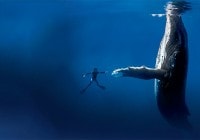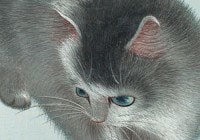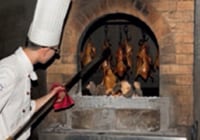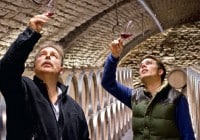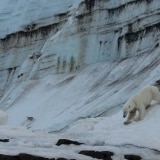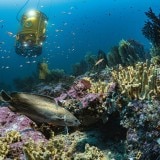
Search in Issues
Chapters
List of parts
Chapter 3
FRANZ JOSEF LAND
A National Geographic Pristine Seas expedition with Blancpain explores the remote jewel of the Russian Arctic.
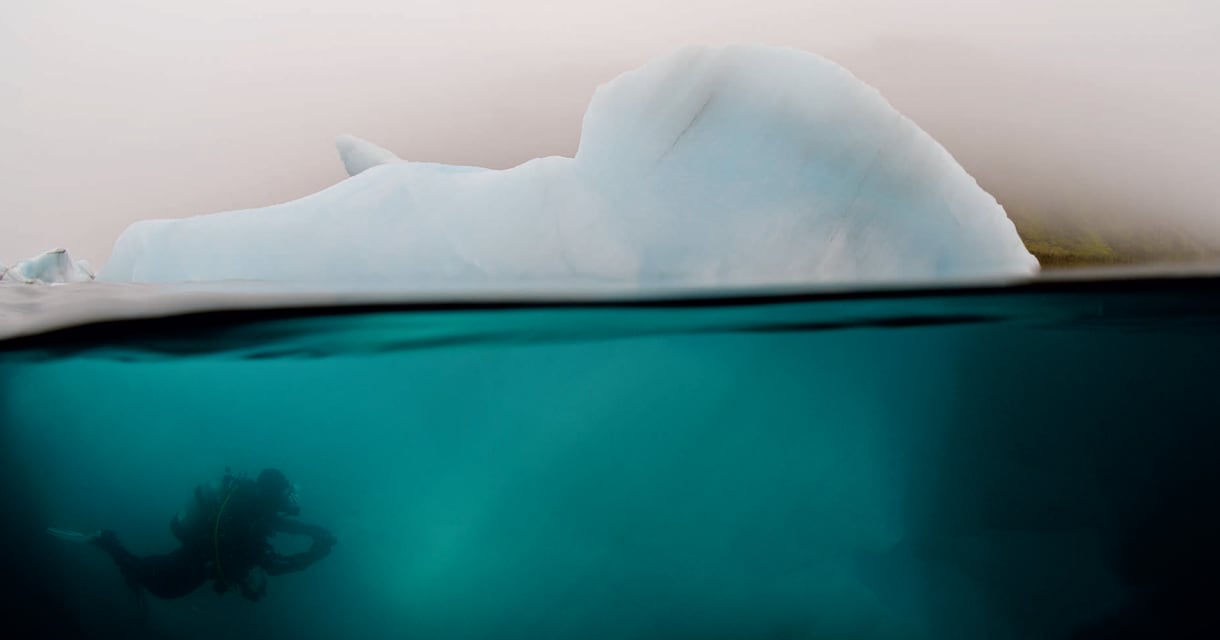
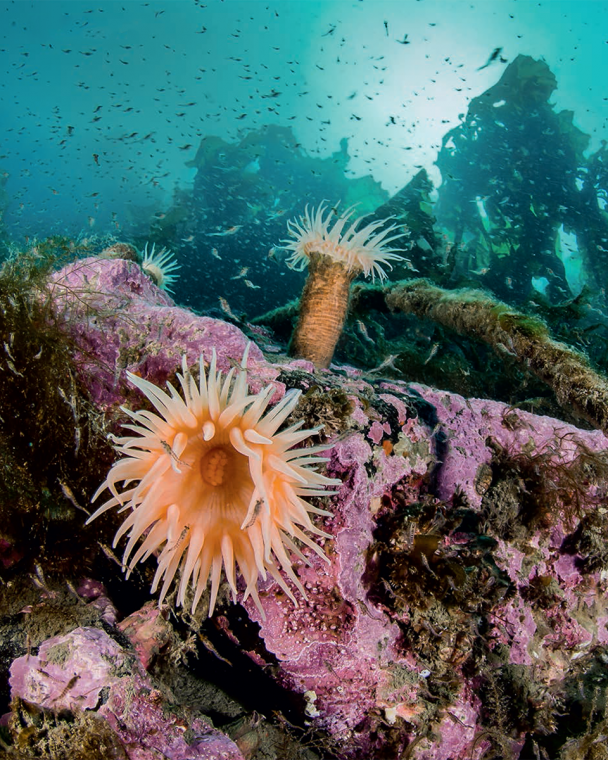
Anemones in the frigid waters of Franz Josef Land look like Arctic underwater flowers.
AFTER FIVE YEARS OF DREAMING and two years of preparation, I was diving at Franz Josef Land.
My fingers were freezing. I was so in pain that I couldn’t feel if I was still holding my camera. My lips were so numb that I could barely hold the regulator in my mouth. The water was green and so murky that I could not see my fins. I continued descending until the green water disappeared, as though I was flying through a cloud and reaching the other end, where the sky opens up. A secret universe unveiled in front of my eyes. A forest of brown algae was growing on an underwater slope of dark volcanic rock. Below the algae, a bed of pale anemones looked like a flower meadow. I swam closer to the rock. An orange sea spider the size of my hand moved slowly among the undersea meadow, in search of prey. After five years of dreaming and two years of preparation, I was diving at Franz Josef Land, virtually the top of the world. This was going to be the most demanding and complex of our Pristine Seas expeditions. Franz Josef Land is the northernmost archipelago in Russia and the closest landmass to the North Pole, only second to the northern tip of Greenland. In the winter, ice and snow carpet the 19 2 islands of Franz Josef Land. The sea freezes, locking the islands in a white trap. The sun is gone for six months, submerging this remote world in a perpetual night. It is one of the most forbidding places on the planet. In the summer, when the sea ice melts and the sun stays above the horizon 24 hours a day, the cold and the darkness morph into a blooming miracle, turning white ice into a green oasis.
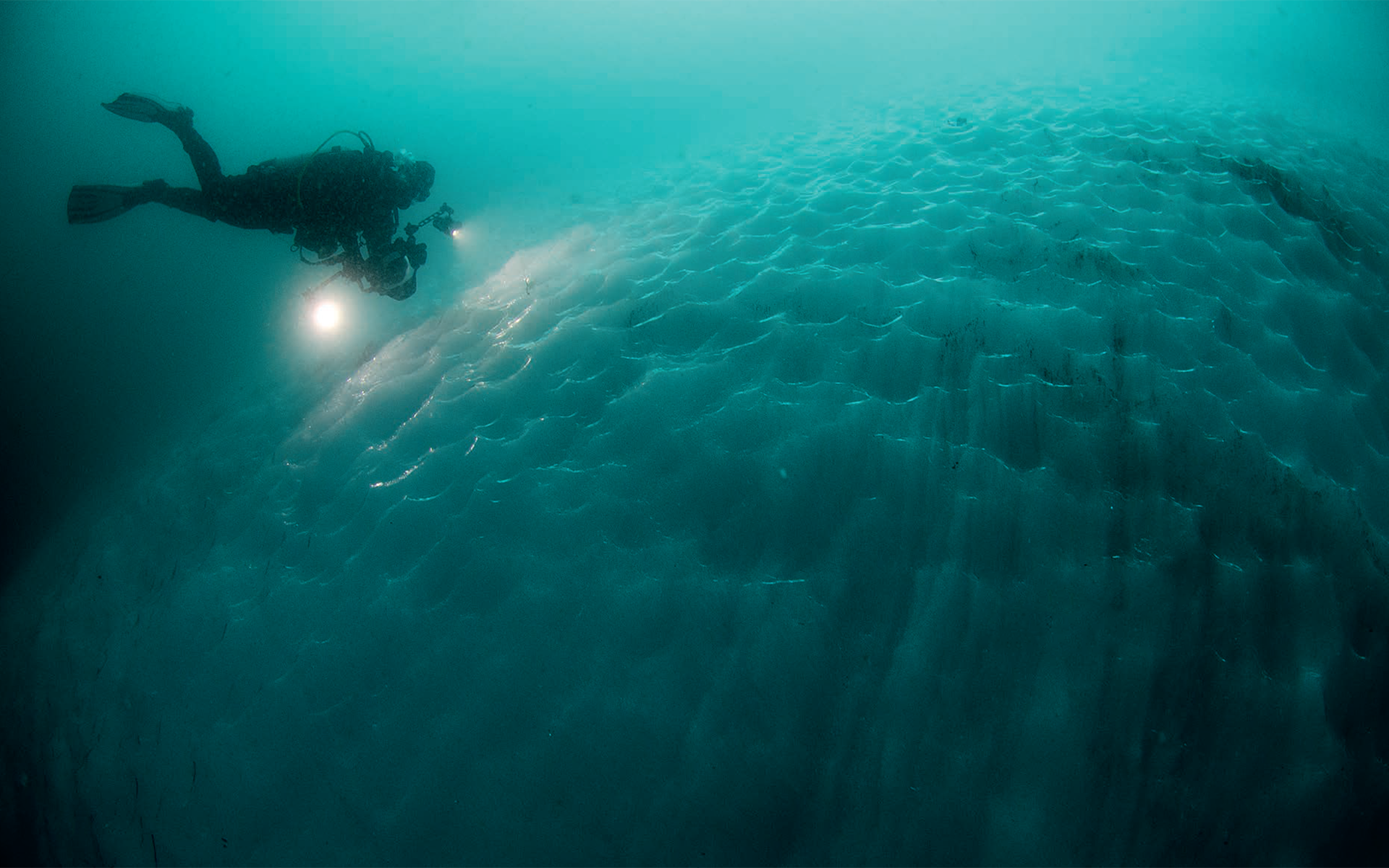
I could see SO MANY BIRDS FLYING that they seemed like a giant cloud of mosquitoes in a summer day.
Because of its remoteness and isolation, and because of its strategic location during the Cold War, Franz Josef Land has remained closed to outsiders until very recently. Since the early 20th century, the only human residents were a few dozen military personnel and scientists from the Soviet Union and later the Russian Federation, who conducted detailed meteorological and oceanographic observations of the high Arctic. The non-human residents? Polar bears, walruses, bowhead whales, seals, and hundreds of thousands of seabirds.
We went to Franz Josef Land on a Pristine Seas expedition with Blancpain in July-August 2013, in collaboration with the Russian Arctic National Park and the Russian Geographical Society. The goal of our expedition was to survey the Arctic wildlife in the region, to assess the long-term changes due to the warming of the Arctic.
During five weeks at Franz Josef Land our international team of 40 scientists, filmmakers and support personnel explored and surveyed on 22 islands, and conducted over 250 dives. We collected data on the abundance of algae, invertebrates, fish, walruses, polar bears, and seabirds.
Fifty species of seabirds inhabit Franz Josef Land during the Arctic summer, some forming enormous nesting colonies, like that at the imposing Rubini Rock. Rubini Rock is a massive vertical cliff , made by basalt that crystallized in the shape of hexagonal prisms, giving it the likes of a giant organ. From a mile away, I could hear the squeaks and calls of the seabirds. Getting closer, I could see so many birds flying that they seemed like a giant cloud of mosquitoes in a summer day. We took our ship as close to the cliff as possible, and only then the rock revealed its baroque richness. Kittiwakes and little auks nested on the rocky cliff and slope, taking advantage of every crack and nook, every hole beneath boulders, to lay their eggs and raise their chicks. Every single horizontal space, many as small as a dessert plate, was occupied. The opening of the sea ice in the summer and the permanent sunlight fosters blooms of microscopic organisms in the sea, which are the base of the food chain that supports such extraordinary number of seabirds.
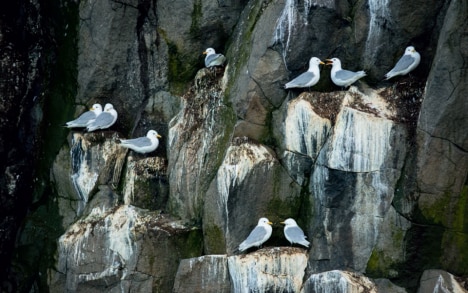
Kittiwakes nest by the tens of thousands in rocky cliffs of Franz Josef Land.
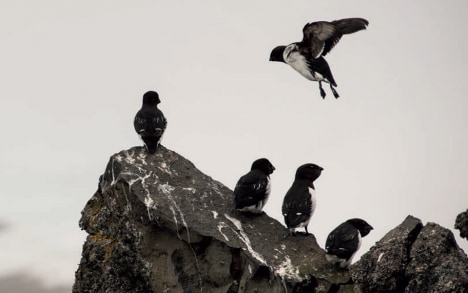
Little auks feed on small crustaceans that grow in the Arctic summer waters.
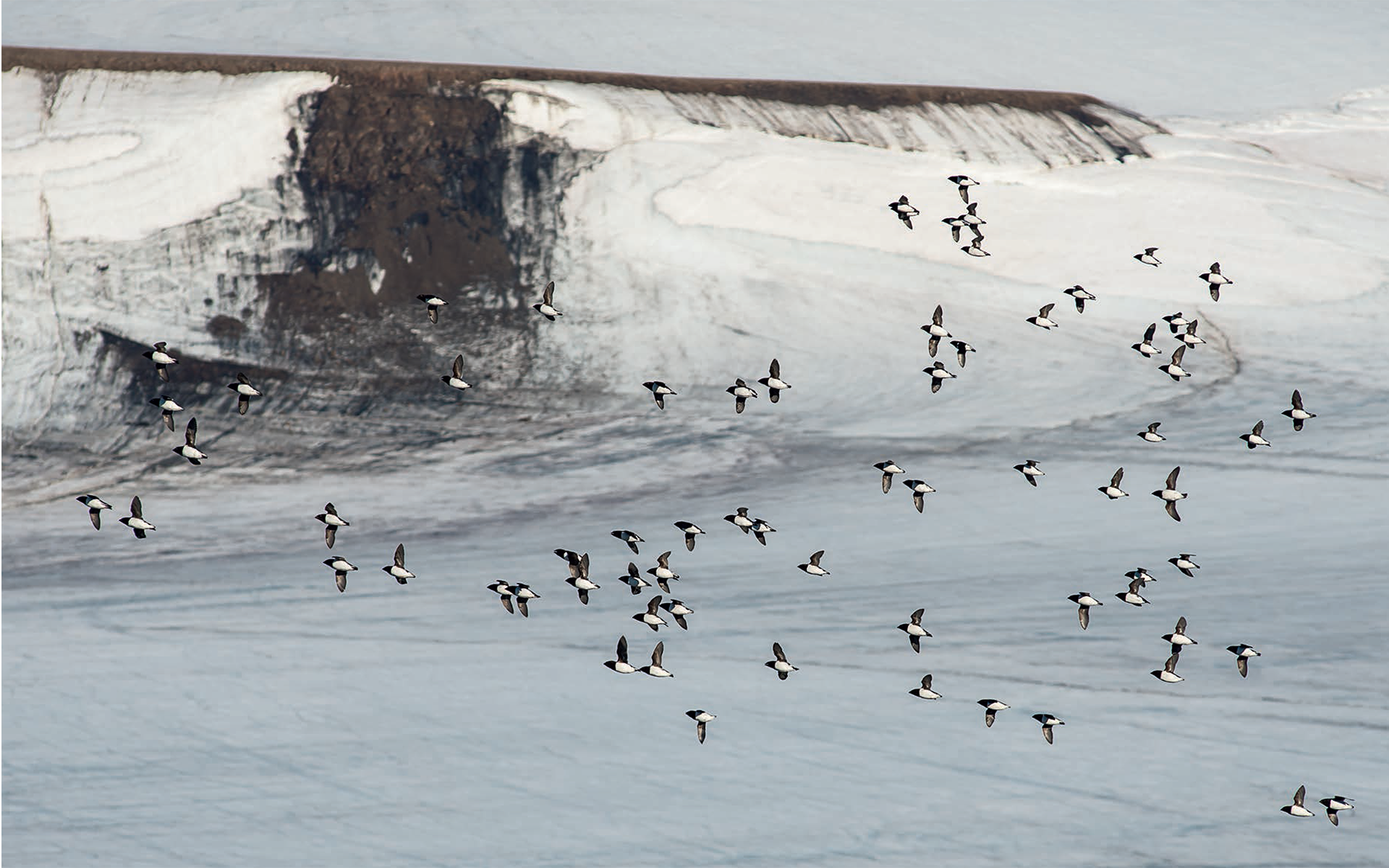
But now, Arctic waters are getting warmer, and that facilitates the northward migration of plankton from the Atlantic. Little shrimp-like organisms, copepods, are the main prey item for the little auks. An Atlantic species of copepod, smaller and less nutritious than its Arctic counterparts, is now found in increasing numbers around Franz Josef Land. If Atlantic copepods replace Arctic copepods, the feeding of the little auks, and hence their ability to raise chicks, may be compromised. Th is is just one of many changes occurring in Franz Josef Land and the high Arctic. We do not know what the outcome will be, but we know that the Arctic of the future will be diff erent from that witnessed by the 19th-century Austro-Hungarian Tegetthoff expedition that discovered these islands and named them after the Austrian emperor.
Until the early 1990s, sea ice was found throughout the Franz Josef Land archipelago even in summer. But when we were there in the summer of 2013, there was no sea ice. We were standing at Cape Fligely on Rudolf Island, the northernmost point in Franz Josef Land, and all we could see was blue water, as far as the horizon. Near our ship we saw a polar bear, standing on black rock, between the edge of a glacier and the sea. We put one of our small boats in the water and got close to the bear. Behind the bear, the glacier was melting and projecting a waterfall into the sea. It seemed as if the bear was also looking for the sea ice, confused by the changes in its world. With the sea ice edge nowhere to be seen, the seals are gone, and polar bears have to depend on a diet based mostly on seabirds, their eggs, and grass.
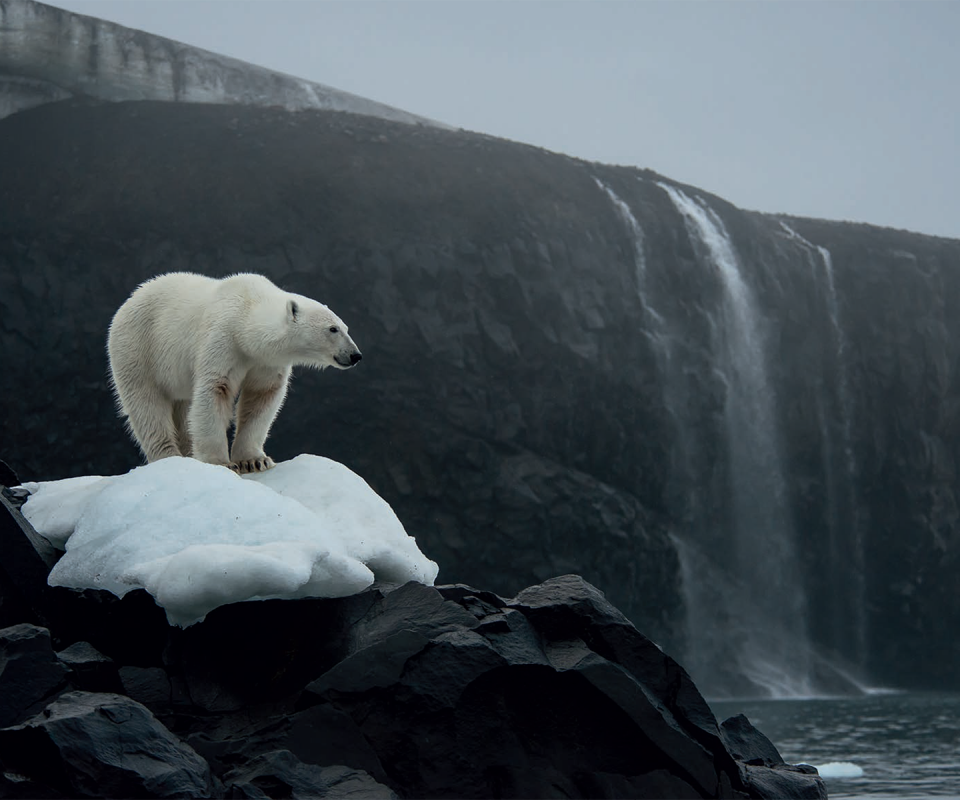
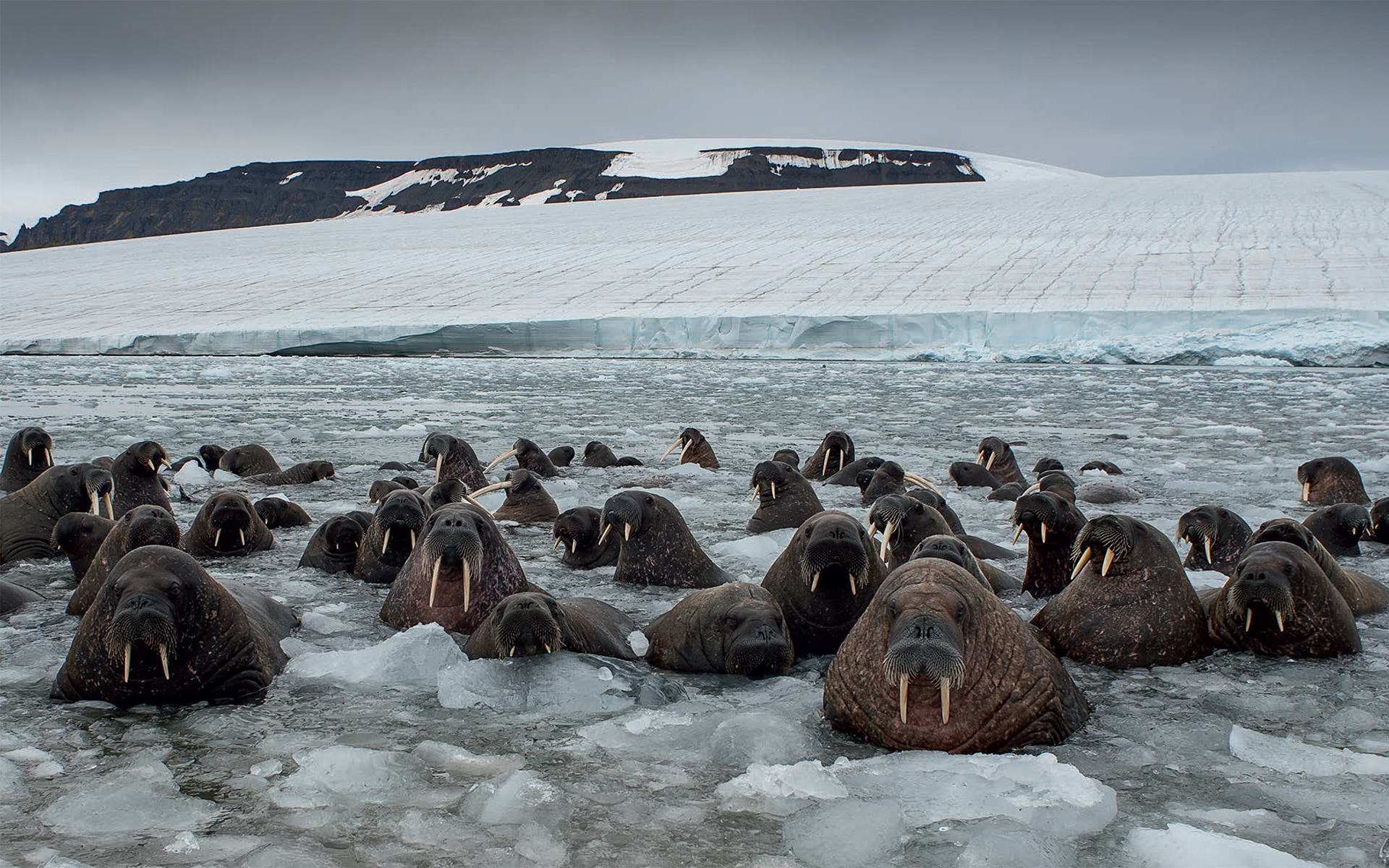
Lifting a third of its body out of the water, HE LOOKED LIKE A MOUNTAIN.
Despite the lack of sea ice, Franz Josef Land continues to be an extraordinary refuge for Arctic wildlife, including another large animal, the Atlantic walrus. Walruses are, second to elephant seals, the biggest pinniped species. Large males weigh up to one ton and a half.
I love diving with sharks and other large animals. Diving with whales is especially exciting because they are the most massive animals in the ocean. Being close to them brings me closer to life—it is hair-raising yet safe. But there was one large animal at Franz Josef Land that I wasn’t so sure about diving with. That’s the walrus. Walruses are huge mountains of fat guarded by long ivory tusks. I can imagine the first humans who saw walruses; they might have thought they were marine monsters. We came to Franz Josef Land with the intention of diving with them.
Near the old Soviet Tikhaya research station, we donned our dry suits, carried our tanks and cameras down a precarious ladder leading from our mother ship to our zodiac. We then traveled west for half an hour, toward a small island where we were told there was a walrus aggregation. There were indeed walruses, and we could smell them before we could see them. About 300 of them were lying down, lazily, on a beach. There were males, females, and two-month-old calves. We approached the beach with our zodiac, as quietly as possible. A few walruses that were in the water came to inspect us. Walruses have very sensitive whiskers, although they are like a thick monofilament fishing line. We cautiously put our cameras in the water with a pole, to get a feel for their behavior, before deciding whether to jump in. A group of four walruses came immediately to inspect our boat. As they got closer we realized how large they were. A large female swam close to us and touched the camera dome with her whiskers, then swimming back suddenly, surprised and apparently scared by the feeling of the glass on her whiskers. The other walruses dived and disappeared. We waited for them to surface. I became a little anxious as we saw two of them diving underneath our zodiac. Suddenly, a male surfaced so close to us that his exhale sprayed me. Lifting a third of its body out of the water, he looked like a mountain with formidable tusks. He dived again and swam away. At that very moment we decided that we were going to postpone our diving with the walruses.
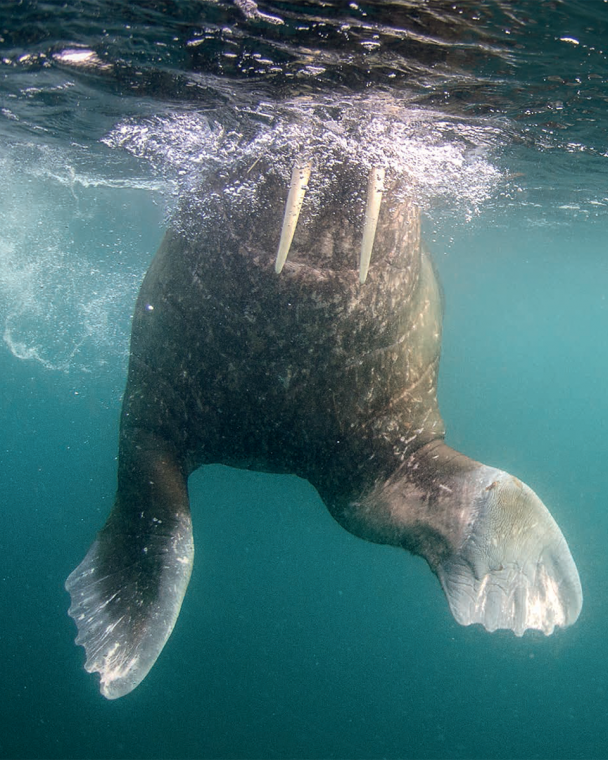
Walruses are very curious animals, coming close to inspect everything from underneath.
Franz Josef Land is a LIVING EXPERIMENTAL GROUND to observe how Arctic wildlife will adapt to a warming world.
Franz Josef Land is a zakaznik, a natural reserve managed by the Russian Arctic National Park. After the expedition, the Park submitted a proposal to the Russian Ministry of Natural Resources and the Environment to give Franz Josef Land and the waters surrounding it National Park status. In a time when the loss of sea ice in the summer will see an increase of shipping, oil exploration, and development in the Arctic, Russia has a unique opportunity to fully protect one of the last places left on the planet that still resembles the world during the last ice age. Franz Josef Land is a living experimental ground to observe how Arctic wildlife will adapt to a warming world. Ensuring that this precious refuge remains safe from direct human impacts will show Russia’s leadership in Arctic conservation, and send a strong signal to other nations to follow.
-----------------
National Geographic’s Pristine Seas expeditions are one of the core elements of Blancpain’s Ocean Commitment. Blancpain was the first to lend financial support to these expeditions, joining as a Mission Partner in 2011. Since that time, it has sponsored eight of the Pristine Seas expeditions, including Franz Josef Land, which Dr. Enric Sala describes in the preceding article. And the Mission Partnership is continuing as Blancpain has committed its ongoing support. Beyond giving financial backing, Blancpain’s CEO, Marc A. Hayek, serves as a member of the Pristine Seas Board of Advisors. Particularly rewarding are the concrete protection and preservation results that have been achieved from these eff orts. Pristine Seas has succeeded in obtaining firm governmental approvals protecting over 1.6 million square kilometers of ocean! Blancpain is proud to have contributed to this success story.
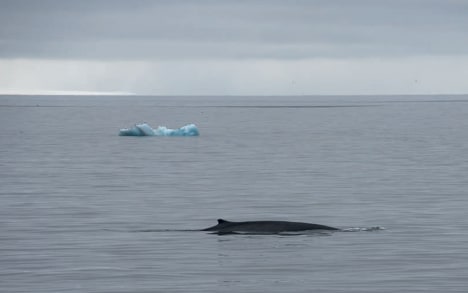
Whales migrate north to Franz Josef Land waters in the summer, after sea ice melts.

Hayes Island has some reminders from a larger population during Soviet times. The Russian government is now cleaning the trash on this and other islands.
Other issues
Don't miss the latest issue
Sign Up for New Releases


